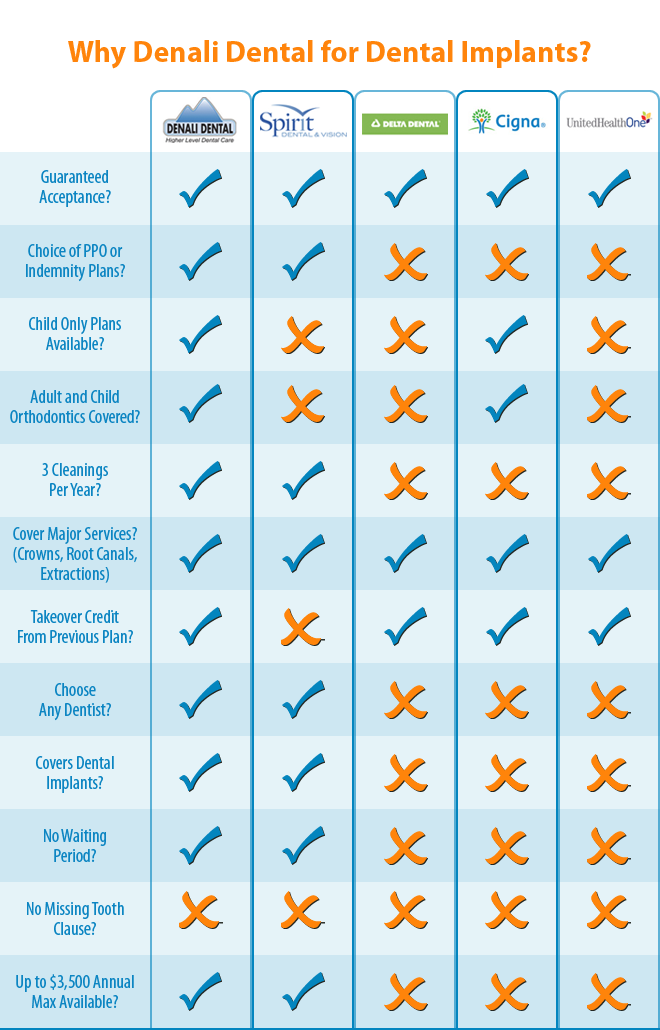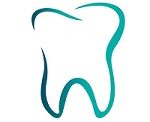Navigating Dental Insurance: Understanding Your Coverage
Do you find navigating dental insurance to be as challenging as navigating a maze?
Understanding your coverage can often feel like deciphering a complex puzzle. But fear not! In this guide, we will break down the intricacies of dental insurance, helping you make sense of it all.
From different types of plans to key terms and definitions, we will cover it all. Discover how to navigate coverage limits and understand which dental services are covered.
Plus, learn valuable tips to maximize your dental benefits and handle insurance claims like a pro. So, grab a cup of coffee, sit back, and get ready to become a dental insurance expert!
Key Takeaways
– There are different types of dental insurance plans, including PPO plans, HMO plans, and Dental Indemnity plans.
– In-network dentists offer discounted rates, while out-of-network dentists result in higher out-of-pocket costs.
– Dental insurance plans have annual maximum limits, which is the highest amount the insurance will pay per year. Once the limit is reached, additional costs are paid out of pocket.
– It is important to maximize dental benefits by scheduling regular check-ups, understanding the details of the insurance plan, reviewing the plan regularly for changes, and keeping track of all communication and claims with the insurance company.
Types of Dental Insurance Plans
When choosing dental insurance, you need to consider the different types of plans available to you. Understanding these types will help you make an informed decision about which plan best suits your needs.
The most common types of dental insurance plans are Preferred Provider Organization (PPO) plans, Health Maintenance Organization (HMO) plans, and Dental Indemnity plans.
PPO plans offer you the flexibility to visit any dentist you choose, although you may receive greater benefits if you visit a dentist within the network. These plans typically have a deductible and co-insurance, which means you’ll have to pay a portion of the treatment cost out of pocket.
HMO plans, on the other hand, require you to choose a primary care dentist from a network of providers. You’ll need a referral from your primary dentist to see a specialist. HMO plans usually have lower out-of-pocket costs but offer less flexibility in terms of choosing a dentist.
Dental Indemnity plans allow you to visit any dentist you prefer without being restricted to a network. However, the reimbursement rates may vary, and you may be required to pay the dentist upfront and then submit a claim for reimbursement.
When selecting a dental insurance plan, it’s important to evaluate your dental needs, budget, and preferences to determine which type of plan will provide you with the coverage you require.
Key Terms and Definitions
Let’s begin by understanding two key terms: in-network and out-of-network.
When it comes to dental insurance, in-network refers to dentists who have an agreement with your insurance company, offering discounted rates.
On the other hand, out-of-network dentists don’t have a contract with your insurance company, resulting in higher out-of-pocket costs for you.
Another important term to know is the annual maximum limit. This is the highest amount your insurance will pay for dental services within a year.
In-Network Vs Out-Of-Network
To understand your dental insurance coverage, it’s important to grasp the key terms and definitions of in-network versus out-of-network providers.
In-network providers are dentists who’ve agreed to a negotiated fee schedule with your dental insurance company. By staying in-network, you can enjoy the benefits of discounted rates and reduced out-of-pocket costs.
Out-of-network providers, on the other hand, haven’t entered into any agreements with your insurance company. While you can still receive dental care from an out-of-network provider, it may come at a higher cost. Out-of-network providers may charge higher fees, and your insurance company may only cover a portion of the costs.
It’s crucial to check with your insurance provider to understand the specifics of your coverage and to determine whether your preferred dentist is in-network or out-of-network.
Annual Maximum Limit
Understanding your dental insurance coverage includes familiarizing yourself with the concept of the annual maximum limit. This is the maximum amount of money that your dental insurance plan will pay for covered services per year.
It’s important to know what your annual maximum limit is because once you reach this limit, you’ll be responsible for paying for any additional dental costs out of pocket.
Typically, the annual maximum limit is set at a certain dollar amount, such as $1,000 or $1,500.
It’s essential to review your dental insurance policy to understand what your specific annual maximum limit is and how it may affect your dental expenses throughout the year.
Being aware of this limit can help you plan and budget for your dental care needs accordingly.
Understanding Coverage Limits
When it comes to navigating dental insurance, it’s important for you to be aware of the coverage limits imposed by your policy. Coverage limits refer to the maximum amount of money that your insurance company will pay for your dental treatments within a certain time frame. These limits can vary depending on your specific policy, so it’s crucial to understand them to avoid any unexpected costs.
Coverage limits typically come in two forms: annual limits and lifetime limits. Annual limits specify the maximum amount your insurance will cover in a single year, while lifetime limits indicate the maximum amount your insurance will pay over the course of your lifetime. It’s crucial to review your policy documents or contact your insurance provider to determine what these limits are for your specific plan.

Understanding your coverage limits is important because it allows you to plan your dental treatments accordingly. If you exceed your coverage limits, you may be responsible for paying the remaining costs out of pocket. Being aware of your coverage limits can help you budget for your dental care and avoid any surprises when it comes to billing.
Dental Services and Their Coverage
Knowing which dental services are covered by your insurance policy is crucial for making informed decisions about your dental care. Dental insurance typically covers a range of services, but it’s important to understand the specific details of your policy.
Preventive services such as routine cleanings, exams, and X-rays are usually covered at a high percentage, often around 80-100%. These services help maintain your oral health and prevent more serious dental issues down the line.
Basic procedures like fillings, extractions, and root canals are often covered at a lower percentage, typically around 70-80%. Major procedures such as crowns, bridges, and dentures may have even lower coverage, usually around 50-70%.
Orthodontic treatment for both children and adults may also have limited coverage, often with a lifetime maximum. It’s important to note that dental insurance policies may have waiting periods before certain procedures are covered, and some services, like cosmetic dentistry, may not be covered at all.
It’s crucial to review your policy carefully and ask your dentist’s office for assistance in understanding your coverage. This will help you make informed decisions about your dental care and avoid unexpected costs.
Maximizing Your Dental Benefits
To optimize your dental benefits, it’s essential to maximize the value of your insurance coverage. Here are some tips to help you get the most out of your dental benefits:
– Schedule regular check-ups: By visiting your dentist for routine cleanings and exams, you can catch any dental issues early on and prevent them from becoming more serious and costly in the future.
– Take advantage of preventive services: Most dental insurance plans cover preventive treatments like fluoride treatments and sealants. These services can help protect your teeth from cavities and other dental problems.
– Understand your coverage: Familiarize yourself with the details of your dental insurance plan. Know what services are covered, what the limitations and exclusions are, and what your out-of-pocket costs will be. This will help you make informed decisions about your dental care and avoid unexpected expenses.
By following these tips, you can make the most of your dental benefits and ensure that you’re receiving the care you need while minimizing your out-of-pocket expenses.
Remember to review your dental insurance plan regularly to stay informed about any changes in coverage or benefits.
Tips for Dealing With Dental Insurance Claims
To ensure a smooth process, it’s important for you to be familiar with the steps involved in submitting dental insurance claims. By following these tips, you can navigate the claims process with ease.
First, make sure you understand your dental insurance plan and its coverage. Familiarize yourself with the terms and conditions, including any limitations or exclusions. This will help you determine what services are covered and the percentage that will be paid by your insurance.
Next, when visiting the dentist, be sure to provide accurate and up-to-date information. This includes your insurance details, such as the policy number and group number. Double-check that the dentist’s office has the correct information to avoid any delays or complications with the claim.
After your dental treatment, ask the dentist for an itemized bill that includes the procedure codes and fees. This detailed bill will help you when submitting the claim to your insurance provider. Keep a copy of the bill for your records.
When submitting the claim, it’s crucial to follow the specific instructions provided by your insurance company. This may involve completing a claim form or submitting the claim electronically. Be sure to include all necessary documentation, such as the itemized bill and any supporting documents requested by your insurance provider.
Lastly, keep track of your claims and follow up with your insurance company if there are any delays or issues. Stay organized by maintaining a record of all communication, including dates, names, and reference numbers.
Frequently Asked Questions
How Long Does It Typically Take for Dental Insurance Claims to Be Processed and Reimbursed?
Typically, dental insurance claims take some time to process and get reimbursed. The exact duration can vary depending on factors like the complexity of the claim and the efficiency of the insurance provider.
It’s important to understand that the timeline may differ from one insurance company to another. To get a better idea of how long it might take for your specific insurance, it’s best to contact your dental insurance provider directly and inquire about their typical processing and reimbursement timeframe.
Can Dental Insurance Be Used to Cover Orthodontic Treatment for Adults?
Yes, dental insurance can be used to cover orthodontic treatment for adults.
Orthodontic treatment, such as braces or aligners, can be expensive, but many dental insurance plans offer coverage for these procedures.
However, it’s important to carefully review your insurance policy to understand the specific coverage and any limitations or exclusions that may apply.
Additionally, some insurance plans may require pre-authorization or a waiting period before orthodontic treatment can be covered.
Is Cosmetic Dentistry Covered by Dental Insurance Plans?
Yes, cosmetic dentistry is sometimes covered by dental insurance plans. However, the coverage can vary depending on your specific plan.
Some procedures, such as teeth whitening or veneers, may be considered cosmetic and not covered.
However, if a procedure has a functional or health benefit, like dental implants or crowns, it may be partially or fully covered.
It’s important to review your insurance plan or contact your provider to understand what cosmetic procedures are covered.
Are Dental Implants Usually Covered Under Dental Insurance Plans?
Dental implants aren’t usually covered by dental insurance plans. However, it’s important to review your specific plan to understand the coverage.
Dental insurance typically covers preventive and basic dental services, while implants fall under more advanced procedures. Some plans may offer limited coverage or reimburse a portion of the cost.
It’s recommended to check with your insurance provider and discuss potential options for coverage or alternative financing options for dental implants.
What Happens if a Dental Service Is Not Covered by Insurance?
If a dental service isn’t covered by insurance, you’ll typically have to pay for it out of pocket. Insurance plans usually have a list of covered services, and anything that isn’t on that list may not be covered.
Before getting a dental service, it’s important to check with your insurance company to see if it’s covered. If it’s not, you may need to consider other options, such as a different treatment or finding a dentist that offers payment plans.
Conclusion
So, now that you have a better understanding of dental insurance, you can navigate your coverage with confidence. Remember to familiarize yourself with the different types of plans, key terms, and coverage limits.
Understanding what dental services are covered and how to maximize your benefits will help you make the most of your insurance. And don’t forget to stay organized and proactive when dealing with dental insurance claims.

Welcome to my website! My name is Jett Kirkland, and I am a passionate and dedicated Dental Educator with a strong focus on periodontal treatments, oral infections and care, dental laser therapy, and holistic gum health. With years of experience in the dental field, I am committed to providing valuable information and resources to help individuals achieve optimal oral health.
